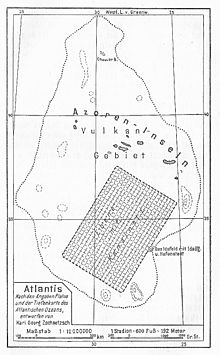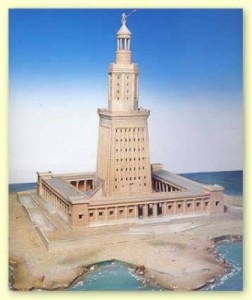Zeus
Euhemerus
 Euhemerus (330-260 BC) was a Greek philosopher and was the best known of the classical writers to rationalise mythology as history and who gave his name to this method of rationalising. Comparable views have also been identified in the writings of a number of early authors including. Xenophanes, Herodotus, Hecataeus of Abdera and Ephorus.
Euhemerus (330-260 BC) was a Greek philosopher and was the best known of the classical writers to rationalise mythology as history and who gave his name to this method of rationalising. Comparable views have also been identified in the writings of a number of early authors including. Xenophanes, Herodotus, Hecataeus of Abdera and Ephorus.
Among his contentions was one that identified Zeus as a king who died on Crete(b). Euhemerism particularly saw the ‘gods’ in Greek mythology as glorified manifestations of early kings and cultural heroes from a distant past. Support for this idea has waxed and waned over the centuries, with fewer followers today. An interesting paper(a) by Professor William Harrison on this subject is worth reading.
>Another Greek writer about whom very little is known was Palaephatus, although there is evidence that he wrote in Athens in the late 4th century BC and was also famous for rationalising myths(c).<
(b) Zeus Is Dead: Euhemerus and Crete, S. Spyridakis, The Classical Journal, Vol. 63, No. 8, May, 1968, pp. 337-340.
Zschaetzsch, Karl Georg
>Karl Georg Zschaetzsch (1870-1946?) was a German intellectual and supporter of the Völkisch Movement, who, in 1920, placed Atlantis in the Atlantic and identified its people as Aryans. He also classified the Phoenicians as Aryan!<
He described the Atlanteans as having had blonde hair and blue eyes, which sounds sadly familiar. His views were adopted by the Nazi Ahnenerbe. Zschaetzsch also supported the idea of a cometary impact being involved in the destruction of Atlantis.
Zschaetzsch suggested that Atlantis was situated in the Azores and published a map illustrating this.
For those who can read German and are interested in the madness of that period, Zschaetzsch’s book Atlantis – die Urheimat der Arier (Atlantis: The Original Home of the Aryans) can be downloaded from the Internet(a) for €5. As a bonus, Zschaetzsch eventually reveals that he is descended from Jupiter and that his unpronounceable name is really just a corruption of Zeus!
(a) https://web.archive.org/web/20041011020316/https://www.germanische-freunde.de/zschaetzsch.html
Freksa, Martin
Martin Freksa (1945- ) is a German historian and the author of Das Verlorene Atlantis, a volume [303] that covers familiar ground but interestingly includes a comparison between characters in the Atlantis story and those of eastern mythologies, for example similarities between Zeus and Krishna. This book has now been translated into English and published under the title of Traces of the Atlantic Civilisation[691].
Freksa suggests that the apparent references to atomic warfare in the Mahabharata could be an allusion to a war involving Atlantis. He also suggests that this use of atomic weapons caused a rupturing of the earth, which led to the Biblical Deluge and the destruction of Atlantis. He dates this event to 3100 BC. The Atlantisforschung.de website has published excerpts from Freksa’s book relating to the war in the Marhabharata(a).
>Freksa also assumes that an earlier world catastrophe, caused by an impact in the western Atlantic, took place about 11,000 years ago. Atlantisforschung also includes a review of a book(b) by Lutz Gentes who recounts the instances of high technology that existed in ancient India.<
Freksa refers to the work of the Austrian writer, Josef F. Blumrich, who is best known for The Spaceships of Ezekiel. Blumrich, a NASA engineer also investigated the traditions of the Hopi Indians which retained a memory of flying machines and also a recollection of Atlantis going back at least 80,000 years.
For me, Freksa’s credibility as a historian was undermined by his acceptance of the hoax perpetrated by Paul Schliemann nearly a century ago.
(a) https://translate.google.co.uk/translate?hl=en&sl=de&u=https://www.atlantisforschung.de/&prev=search
Pharos
 Pharos in the Nile Delta has been suggested by R. McQuillen as the location of Atlantis. It should be noted that the cities of Canopus and Herakleion in the same area were submerged, apparently due to liquefaction(h), following an earthquake between 731 and 743 BC. If something similar occurred to Atlantis situated at Pharos it might explain the shoals of mud reported by Plato and may even have been the reason for the erection of the famous lighthouse there, completed around 280 BC.
Pharos in the Nile Delta has been suggested by R. McQuillen as the location of Atlantis. It should be noted that the cities of Canopus and Herakleion in the same area were submerged, apparently due to liquefaction(h), following an earthquake between 731 and 743 BC. If something similar occurred to Atlantis situated at Pharos it might explain the shoals of mud reported by Plato and may even have been the reason for the erection of the famous lighthouse there, completed around 280 BC.
This lighthouse at Pharos took 20 years to build and is reported to have been as much as 450 feet in height, topped with a statue of Poseidon (or Zeus). It is claimed that there was also a furnace on top which, according to Robert Temple [928], suggested that some form of mirror reflected light out to sea. There is evidence from writers as early as Homer that nocturnal sea travel was commonplace in ancient times(d), so some system of beacons to assist this, would have been a natural development.
Themistocles (524-459 BC) is traditionally credited with having established the first Greek lighthouse at Athens’ port, Piraeus, in the 5th century BC, which was a column with a beacon on top.
The coining of ‘pharology’ as a term to describe the study of lighthouses is generally credited to the British hydrographer John Purdy (1773-1843).
In a study of ancient lighthouses (pharology) by Ken Trethewey(a), now a retired marine engineer, he indicates that there were probably precursors to the Alexandrian edifice, but that there is no archaeological evidence to support this contention. Just as New York’s Empire State Building could not have been built without the preceding decades of evolution of building methods, similarly, the magnificent Pharos lighthouse must have had forerunners.
Another suggestion is that altars, temples and latterly Christian churches frequently situated at the end of promontories may have functioned initially as navigational aids, keeping in mind that early Mediterranean seafarers preferred coastal hugging to open sea travel. I would think it strange if such locations were not used for beacons.
A book review by Terrance M.P. Duggan draws attention to the use of the word ‘pharos’ as far back as Homer’s time, centuries before the Alexandrine structure was built(c). Duggan has also noted in an extensive study of ancient beacons(d) how “sailing at night was practiced in antiquity, first by the Phoenicians” and that “later, sailing at night is mentioned repeatedly by Homer in the Odyssey.” It must be obvious that such regular nocturnal travel could not have been achieved without the availability of some system of warning beacons.
Duggan also notes the use of false beacons such as in the story of “Palamedes’s father, the King of Naupilus or Euboea, then lit a series of false beacons leading to the shipwreck off Euboea of much of the Achaean fleet returning from the Trojan War, using false maritime navigational beacons to serve as a wrecker’s device, and with the use of these false navigational beacons quite clearly indicating the presence at this date of considerable numbers of genuine navigational beacons along coastlines to provide an expected navigational guide for ships sailing through the night.“
What I also found interesting was another quote by Duggan of a passage from Al-Mas’udi, circa 947 AD – “At the point where the Mediterranean Sea joins the Atlantic Ocean, there is a lighthouse of stone and copper (bronze), built by the giant Hercules (probably to be associated with the location of the Phoenician Temple of Melkart-Herakles on the North African side). It is covered with inscriptions and statues whose hand gestures proclaim to those coming from the Mediterranean who wish to enter the Atlantic Ocean, ‘There is no way beyond me’” This is a clear association of Heracles with a lighthouse and raises the question of whether this was a more widespread occurrence, which seems possible.
At the other end of the Mediterranean, the Colossus of Rhodes is also thought by some(g) to have functioned as a lighthouse, but at the very least was a daytime navigational marker, Heracles was also worshipped on the island as the founder of its first settlement.
The Tower of Hercules is an ancient Roman lighthouse on a peninsula about 2.4 km (1.5 mi) from the centre of the town of A Coruña, Galicia, in north-western Spain. There is also a claim that a Roman lighthouse existed at Akko (Acre), now in northern Israel, which is discussed elsewhere and supported by numismatic and archaeological evidence(i).
Massimo Rapisarda & Marcello Ranieri have now published a paper(f) pointing to possible land-based navigational aids, most likely, Phoenician, at the Sicilian promontory of Capo Gallo. They also refer to “the renowned Phoenician ability to navigate at night.”
Trethewey, a leading pharologist, published Ancient Lighthouses [1667] in 2018. Furthermore, he has also published a series of eight lengthy papers on pharology on the academia.edu website(e).
>The prolific Dr. Uday Dokras in his work on the lighthouse at Alexandria wrote that it “was certainly not the first such aid to ancient mariners but it was probably the first monumental one. Thasos, the north Aegean island, for example, was known to have had a tower-lighthouse in the Archaic period, and beacons and landmarks were widely used by cities to help sailors across the Mediterranean. Ancient lighthouses were built primarily as navigational aids for where a harbour was located rather than as a warning of hazardous shallows or submerged rocks, although, because of the dangerous waters of Alexandria’s harbour, the Pharos performed both functions.” (l)<
Other papers by Marco Vigano also investigate the subject of proto-lighthouses(b)(j), furthermore, a book review by Terrance M.P. Duggan, draws attention to the use of the word ‘pharos’ as far back as Homer’s time, centuries before the Alexandrine structure was built(c). Duggan has also written a paper on The Missing Navigational Markers(d).
A recent book, The Electric Mirror on the Pharos Lighthouse[948], edited by Larry Brian Radka, argues spiritedly for the use of electricity at Pharos!
Robert Graves suggested a number of locations as having Atlantean connections. Included in that list is Pharos(k).
(a) https://www.academia.edu/Documents/in/Ancient_lighthouses
(d) https://www.academia.edu/7665901/On_the_Missing_Navigational_Markers?auto=download
(e) https://www.academia.edu/Documents/in/Lighthouses
(g) https://www.athensjournals.gr/mediterranean/2019-5-1-2-Kebric.pdf
(h) Science Notes 2001: The Sunken Cities of Egypt (ucsc.edu)
(i) https://www.researchgate.net/publication/236849769_The_Roman_Lighthouse_in_Akko_Israel
(j) http://www.arigenova.it/wail/Articoli/Pharology.pdf
(k) Pharos and the Atlantis legend – Atlantisforschung.de (atlantisforschung-de.translate.goog)
(l) https://archive.org/stream/lighthouse-of-alexandria-book/Lighthouse%20of%20Alexandria-BOOK_djvu.txt *
